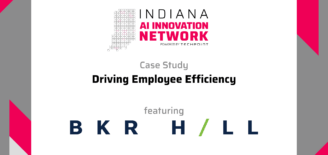Tips For Fast and Painless Customer Onboarding
It is often said that once the deal is closed, the work begins. Nowhere is this truer than in technology, where new clients must first learn how to use the product before they can reap the benefits. Add into this the notoriously tech-adverse healthcare industry, and you have a puzzle for the onboarding ages.
At hc1.com, because our client base is so unique, and because our product is so revolutionary, we have developed a healthcare-specific onboarding process that is based on extensive research and best practices. Our goal is to provide value to our clients as soon as possible so that they can personalize the healthcare experience for their own providers and patients.
Here are our 5 tips for fast and painless customer onboarding:
1.) Planning
The planning stage of onboarding is when the sales team, the client success team, and the client discuss what was agreed upon during the sales cycle. As part of the handover from sales to client success and the kickoff meeting with the client, it is important to confirm the key objectives the client is expecting to achieve with the solution, and establish who is responsible for each aspect of the activation process. Key roles are also determined during the planning stage and clear lines of communication and escalation between the client and our client success team are established.
2.) Training
The most important aspect of training is timing – training different user groups when it is appropriate will make a world of difference down the road. Having system administrators and client leaders trained first will help build adoption across the client base. At hc1, we heavily promote our user-friendly online training materials including videos, recorded webinars, and self-paced online training modules. Having multiple training paths available allows for customization based on the budget and expectations of specific clients.

3.) Configuration
Workflow configuration is important because it allows users to understand the solution in relation to their roles within the organization. In order to increase user adoption across the organization, it is imperative to make the solution as easy as possible to use. Working with department leaders and subject matter experts allows hc1 to develop streamlined workflows that system admins can test before rolling out to end users. Because all of the configuration is completed in the test environment, it can be shaped to a perfect fit before going out live to end users.
4.) Validation
Validation is the most important stage of a successful onboarding, but it is also the most problematic for timely project completion. Clients are eager to be up and running with the solution, but often find it challenging to complete a robust validation. It is one of our best practices to ensure that clients validate their important workflows to ensure proper HIPAA-compliancy and integration with their clinical information system. hc1 also engages subject matter experts early in the activation who have already defined their organization’s approach to validation with ample coverage of different scenarios. Without useable data, the client won’t see any value to the solution, which is why it is such an important stage of the activation.
5.) Evaluation, Adoption and Expansion
During the final stage of on-boarding, the hc1 sales team and client success team determine where things went well, and identify areas that can be fine-tuned in the future. Our team collects feedback from the client to measure the success of the onboarding process and to gauge the immediate value that the solution is having. hc1 measures the use and adoption of the solution across various departments and user groups to continually engage with our customers in order to encourage best practices and optimal workflows. Over time, patterns emerge so we can effectively track where the problems occur historically and develop an encyclopedia of best practices for on-boarding.

Having a set of activation guidelines and goals allows for fast and easy activation –while a year-long onboarding process is common with many CRM and clinical information system installations, hc1 has reduced the average onboarding time to four months. As the leader in healthcare relationship management, we know that not all of our clients have the same resources available. It is important to shape the onboarding process to meet your client’s needs (and limitations) and have a best practice pathway in place for them.
This is why hc1has introduced hc1 Quick Start™, a self-guided 30-day activation process. hc1 Quick Start™ combines the best parts of our standard activation with easy-to-follow online training materials and a live support team to get clients with limited budgets or other limited resources up and running with hc1. This 30-day activation process gives clients access to the value of the hc1 solution immediately, with the ability to scale down the road.

In the end, a truly successful onboarding process is one that results in a long-term relationship between your company and the clients. Making your new clients feel as comfortable as possible and providing them with all of the resources they need to thrive can help strengthen these relationships.



